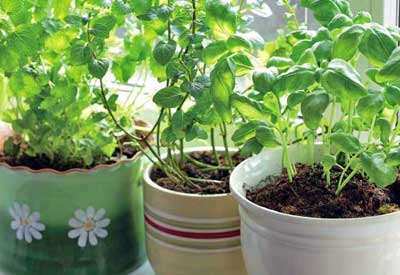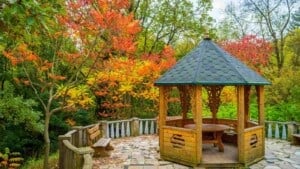All gardeners know better than other gardeners. – Chinese Proverb
Whether you purchase plants in beautiful new planters or plastic nursery pots, there comes a time when they will need to be repotted. Fortunately, planting in pots is relatively easy.
Prior to planting, carefully clean out the container you intend to use with warm soapy water and rinse well. This is especially important if reusing older containers, as dirty pots may harbor insect eggs and disease spores. If using terra-cotta containers, rinsing and soaking with water will have the added benefit of saturating the many tiny pores in the clay, preventing them from wicking moisture away from the soil.
Now that your container is clean and ready for planting, you’ll need something to fill it with — besides the plant, that is. I recommend purchasing an organic potting mix, or you can make your own soil. What you’re looking for is a growing medium that is light and fast-draining, yet contains enough organic matter to hold moisture and nutrients. If you want, you can muscle up your potting mix by adding an organic, slow-release fertilizer — a good watering will get it started.

#1 POTTING SOIL
Roots Organics Original Potting Soil
A favorite! This ready to use formula is made with only the finest ingredients.
$27.95Learn moreGet your potted crops off to a great start and keep them healthy with premium quality potting soils. Designed to provide root support, moisture retention and healthy nutrients, these organic mixes will give you maximum results.
It’s best to wet any growing medium prior to using it. If you bought a commercial mix, you can moisten it right in the bag it comes in. Use warm water and work it into the soil until damp. Ultimately, you want enough moisture so the soil mix holds together when squeezed, but not so wet that it drips.
Partially fill the container with the prepared soil (heavy containers should be filled at their permanent location). Do not put gravel or pot shards in the bottom of containers to facilitate drainage. Contrary to popular belief, adding these materials may actually make drainage worse. To keep soil from leaking out the bottom of your container try covering the drainage hole with a paper coffee filter.
Carefully remove the plant from its original container and examine the root ball. If the roots are matted or badly entwined (pot bound), you’ll want to gently loosen them to promote healthy growth after planting.
Place the plant in the pot to its correct planting depth, which is the same depth it grew in its original container. Finish adding soil to the container and firmly pack it in around the edges of the plant, leaving one to two inches from the rim. This allows you to water heavily without washing soil out of the pot.
When you are finished planting, thoroughly water with a light solution of compost tea or kelp extract to reduce transplant shock. Enjoy!
Top off your container with a layer of Sphagnum moss to help keep the potting mix moist. It may deter fungus gnats too!












